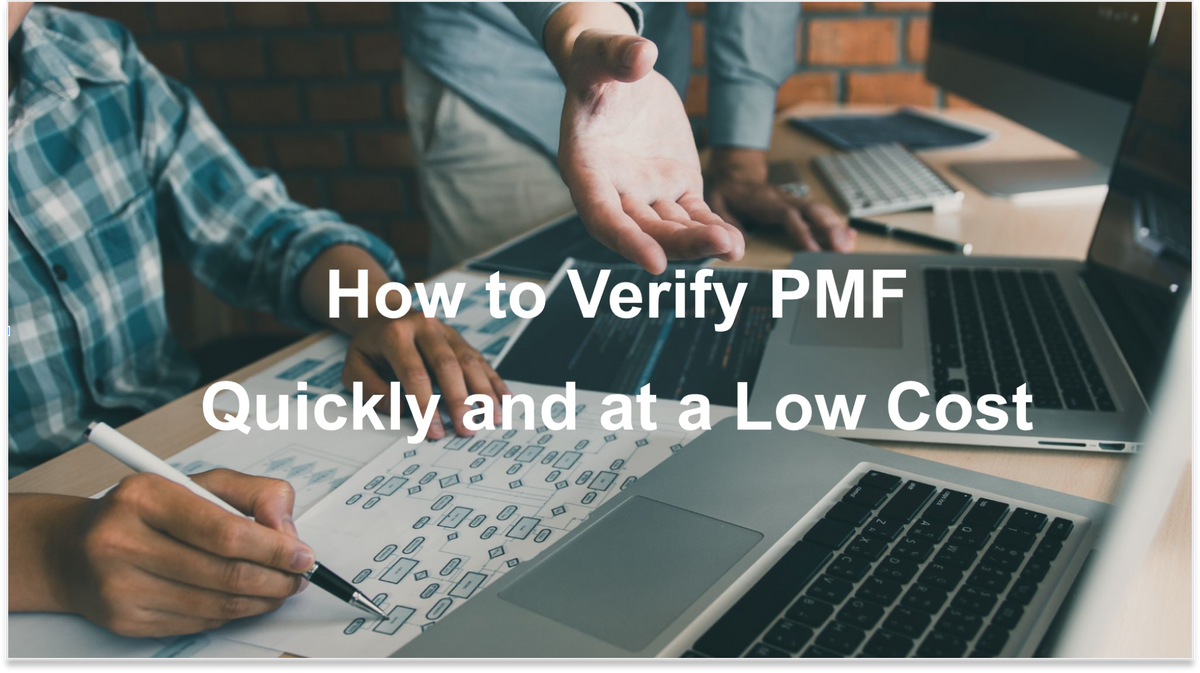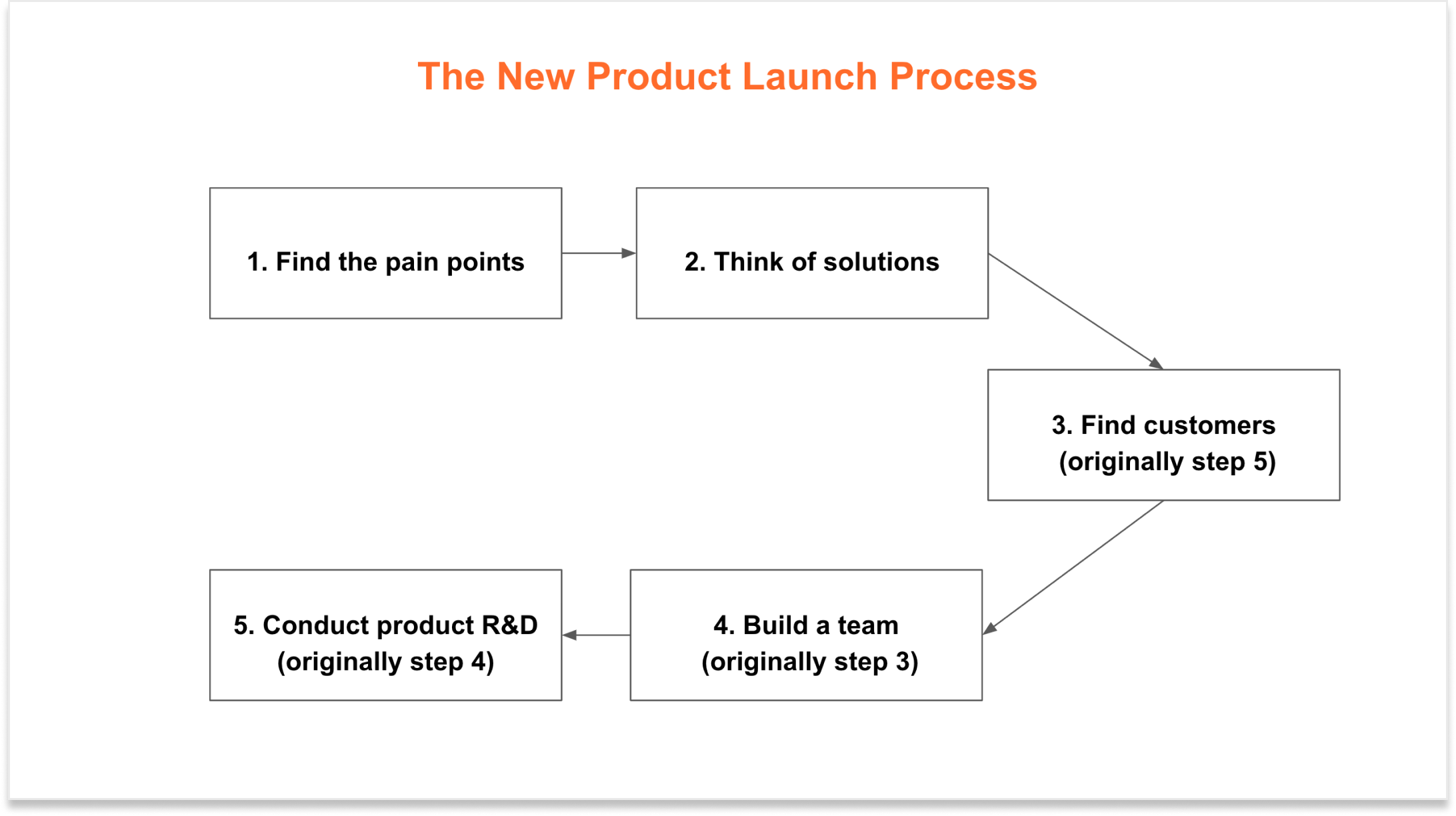SaaS 102 #29 How to Verify PMF Quickly and at a Low Cost

When we create an international SaaS product, we encounter many challenges, such as language issues, laws and regulations, and team communication. But from my point of view, the biggest challenge is actually:
Getting feedback from our users.
Suppose your product is sold in a single country or region, and you yourself are based in the same country or region. In that case, you can communicate with customers quite easily. Plus, if you create a B2C product, you can give feedback as one of the product’s users.
But if you have an international B2B SaaS product, especially if your product is in its early stages and doesn’t have many customers, it will be very difficult for you to know:
- If what you think are the customers’ pain points are actually their pain points
- If your product can solve your customers’ problems
- How many customers are willing to pay for your product
So, in this article, I’ll answer the question: How to verify PMF quickly and at a low cost?
How to quickly and affordably check if a product is viable
According to traditional thinking, the product launch process can be divided into the following five steps:

The biggest problem with this traditional process is:
It takes a long time to collect and verify feedback. The costs of verifying that feedback are also very high.
It often happens that companies work hard for six months to build a team, and spend one to two years on product R&D, but when they put the product out on the market they discover:
- The pain points they initially hypothesized weren’t their customers’ actual pain points.
- Not many customers are interested in buying the product they worked so hard to create.
Every product manager and CEO will always think that the pain points they have found are the customers’ real pain points, but many times it’s just not the case.
As for myself, I don’t think that I can find customer pain points very accurately. But I will run tests at as low a cost as possible to learn by trial and error. And I keep running tests until I find the answers I’m looking for. If I haven’t found answers after 10 tests, I’ll carry on. If necessary, I’ll run 100 tests.
As long as the costs of my trial and error tests are low enough, and I receive feedback quickly enough, then I have a chance of finding out the customer’s real pain points, and creating a product that both creates value for them and which they are happy to pay for.
So I’d like to suggest my own optimized product launch process, as shown below:

We really don’t need to invest a lot of time and energy into building a team and product R&D. We can first come up with the concept and see how many customers would be willing to purchase the product.
If there is a lot of demand to purchase the product, then we can spend time on R&D and building a team.
If not many customers want to purchase the product, then we can go back and think about the customer pain points and the solutions we are trying to provide, going through steps one to three again.
The optimized product launch process has the following benefits when compared with the traditional version:
1. It takes less time to receive feedback: It might take one or two years to get feedback with the traditional process, but only one or two weeks with the optimized process.
2. It costs less to verify ideas: With the traditional process you might need to build an R&D team, and invest thousands or millions of dollars. With the improved version, at the start, you only need yourself.
3. It’s easier to build a team. Even if both processes include building a team, it’s easier to attract investors and employees when you can show them a customer list, especially when you compare it to only showing them your idea without any confirmed customers.
By this point, many readers might be thinking:
I admit that there are many benefits to following this method, but how can I sell a product to customers when I haven’t even built it yet?
In the rest of this article, I will go through detailed steps for how to check whether an idea for an international SaaS product is viable.
How to sell a product that’s still at the idea stage
We can’t talk about selling products that are still at the idea stage without mentioning Dropbox.
The Dropbox story
Dropbox is a SaaS product that supports online file hosting and group collaboration. Back around 2008, cloud storage and online collaboration was still a comparatively novel idea. Researching and developing a product like Dropbox required investing a large amount of resources, and investors weren’t sure if people would be prepared to pay for it once it was created.
So, Dropbox co-founder and CEO, Drew Houston, ran a test to verify if the product was viable. He placed a demonstration video online, invited people to view it, and then prompted people who were interested in Dropbox to join their waiting list by registering on the official website. (At this point in time, Dropbox had not yet been created. Houston just created a video simulation of what Dropbox could look like and what could be done with it.)
The result of this video test was that tens of thousands of people visited the Dropbox website. Even more importantly:
The number of people who registered and joined the waiting list for the Dropbox beta version jumped from 5,000 to 75,000 overnight.
Once you have a list of tens of thousands of people who are willing to use your product, it will become much easier to find investors to fund you or to persuade people to join your team.
With so many people on its waiting list, Dropbox could easily attract investors and talented employees. They created their product, and in 2018 listed their IPO with a valuation of $9.2 billion.
Using Product Hunt to test ideas
When verifying if our own product is viable, we can look at the example set by Dropbox. Although these days, we can use some even better platforms to share product information and receive customer feedback, such as Product Hunt.
(Image source:https://www.producthunt.com)
You can publish information about your product on Product Hunt, such as product introductions, demonstration videos, and prototypes. You can then see how many people are interested in your product.
People who think your product idea has value can upvote it, or they can select “Visit” to go to your official website.
The more upvotes you get, the more it will be recommended to other people. It might even get added to a specialized list, and get viewed by even more product managers and investors within the community.
For example, Slack won the Product of the Month award on the platform in December 2013. At the time, Slack was a new product that had just come online. The 17,000+ followers and upvotes Slack got on Product Hunt helped it gain its first batch of potential customers.
(Image source: https://www.producthunt.com/posts/slack)
Once you have a list of your first batch of potential customers, you can tag the attributes of your customers and start to build a picture of what kind of customer your product appeals to.
Using fake door testing
Even if you haven’t yet created your product, you can use fake door testing to go a step further and verify the willingness of your customers to pay.
You can email your potential customers, inviting them to choose a payment plan for your product. When they click the link in the email, you can redirect them to a simulated pricing page.
When they select a payment plan, you can display a message saying: “Thank you for registering your interest. This plan is not available yet. We will let you know as soon as it is available and offer you an exclusive discount.”
By using fake door testing, you can quickly collect data about how many customers would be willing to pay for your product features, and how much they would be willing to pay.
Of course, there are many things you need to pay attention to with regard to exactly how to implement fake door testing. To learn more about fake door testing, I recommend you read this guide.
Summary
The biggest challenge when creating an international SaaS product is obtaining customer feedback.
In order to quickly obtain customer feedback, we need to start selling our product to customers right from day one.
According to the traditional process, we would do the following:
- Find the pain points
- Think of solutions
- Build a team
- Conduct product R&D
- Find customers
To optimize this process, we can start selling to customers before we start building a team:
- Find the pain points
- Think of solutions
- Find customers (originally step 5)
- Build a team (originally step 3)
- Conduct product R&D (originally step 4)
In the past, this might have been very difficult to do. But now many channels and methods are available to help us gauge customer interest before building a final product.
By using these channels and methods, no matter where we or our customers are based, we can quickly gain feedback at a low cost and verify whether an international SaaS product is viable.
I'm Teddy, Co-Founder & CEO of AfterShip, SaaS 102 is a series of articles where I share my experience in SaaS startups.
We are looking for great SaaS sales talent and welcome you to join us at careers.aftership.com.
(Article translated by Joseph O'Neill)
